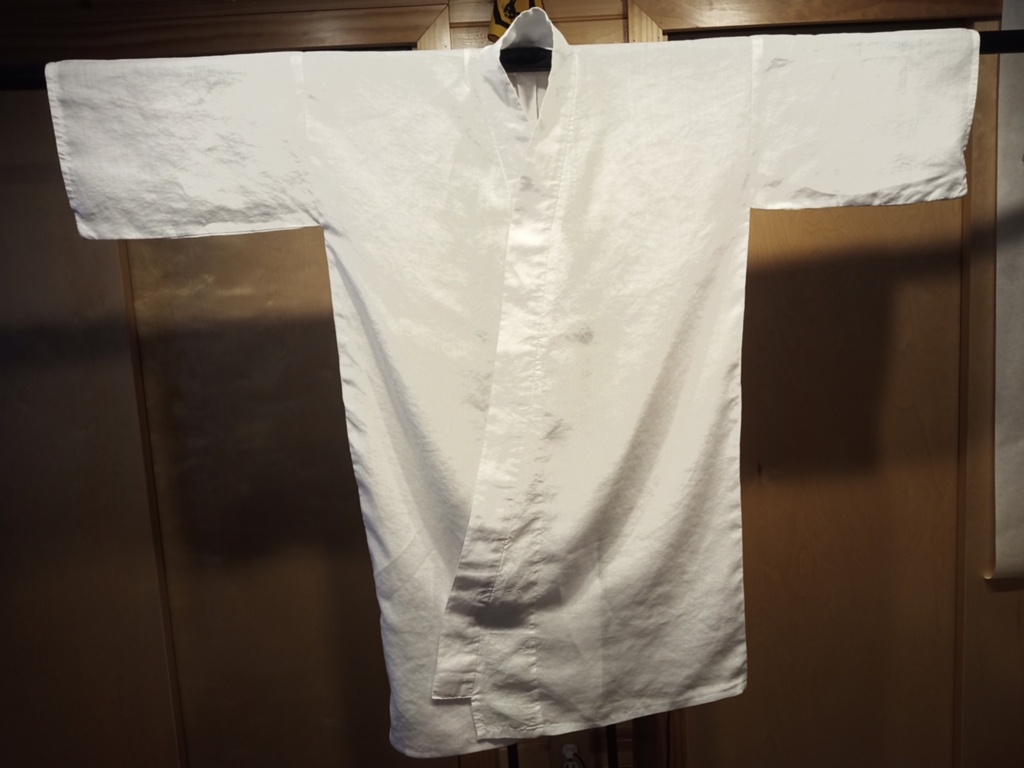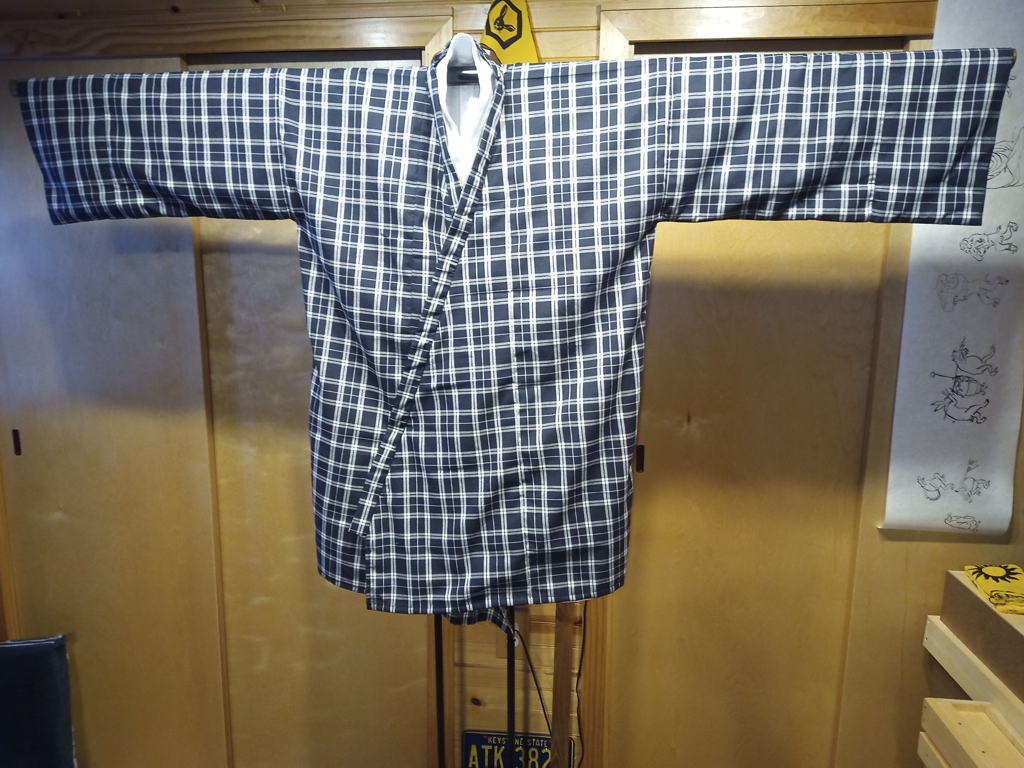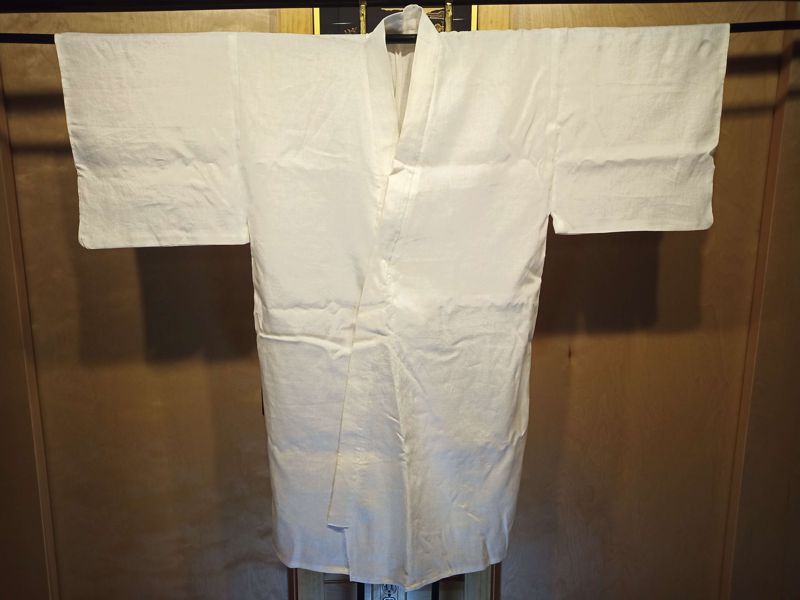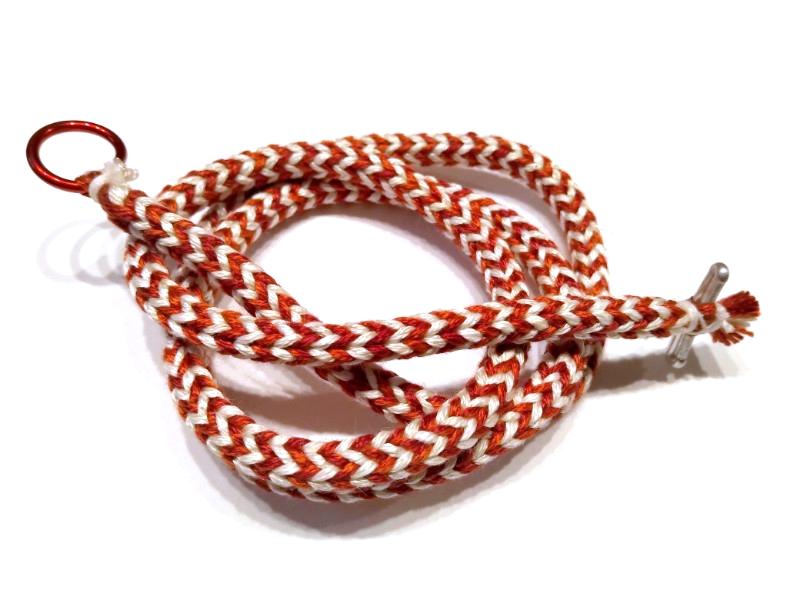The first is another white kosode. I’m having to retire one of my old, old kosode because the cotton fabric is failing, so I need a kosode with narrow sleeves that can fit through narrow spaces in older garments. I have modified all of my older kosode to maximize the opening where the sleeve meets the body, but some of them just don’t have a lot of height to the sleeve itself.
I only had a few months left to make my white kosode for 2025 anyway. This one is from the nice white linen I have been buying at Pennsic for the last few years. Due to some poor planning, I was not able to use the most au courant sewing pattern for kosode. I also decided to cut the piece for the neck band a little wider than normal, so it would stay more visible when worn under other kosode. This meant that the okumi overlaps are a little small. Oh well.
The next one is more exciting and more interesting. It’s made from a black and white linen tartan fabric I also bought at Pennsic, I think from the same merchant who sold me the linen for the recent green hakama. The pattern is woven in, not just printed on the surface. It’s very nice fabric.
The overlaps are a full panel width! They are joined at the edges of the neck opening! Neither the body panels nor the overlap panels are cut to make them narrower or angled, they are just folded! The sleeves are 1.5 panels wide, but those panels are not cut either! The sleeve ends double back on themselves to make self-facings! If you look closely, you can see I’ve done some clever things at the seams where sometimes the grid matches up and sometimes it doesn’t. I know all that sounds very technical and maybe doesn’t make sense to you, but trust me, I’m very happy with the work that went into this one.






